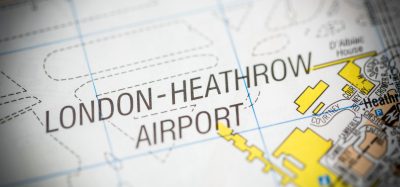ACI reports passenger traffic down by 2.7%; cargo down by 8.2%
- Like
- Digg
- Del
- Tumblr
- VKontakte
- Buffer
- Love This
- Odnoklassniki
- Meneame
- Blogger
- Amazon
- Yahoo Mail
- Gmail
- AOL
- Newsvine
- HackerNews
- Evernote
- MySpace
- Mail.ru
- Viadeo
- Line
- Comments
- Yummly
- SMS
- Viber
- Telegram
- Subscribe
- Skype
- Facebook Messenger
- Kakao
- LiveJournal
- Yammer
- Edgar
- Fintel
- Mix
- Instapaper
- Copy Link
Posted: 19 March 2010 | Airports Council International (ACI) | No comments yet
ACI reports preliminary results of a 2.7 percent decline in global passenger traffic for 2009, reflecting steep declines in the first quarter in most regions but a return to growth activity by year-end. Total cargo volumes retracted by 8.2 percent, while aircraft movements were 5.5 percent below the 2008 level. The preliminary report is based on input from over 900 airports.
ACI World Director General Angela Gittens comments, “We are pleased to see that the global results for 2009 were less depressed than originally anticipated, although the pattern was as we had forecast. We recognize the economic cautions ahead but early indications for January and February confirm continuing global traffic stabilization with reports of renewed domestic and international demand in many localities.”
Rebounds in domestic traffic helped mitigate the impact of global recession. Strong performance in the Asia-Pacific and Latin America-Caribbean regions during the second half of 2009 was driven primarily by domestic traffic in China, India and Brazil. The Middle East maintained a more stable overall performance curve throughout the year, whereas airports in the North America and European regions only timidly exited negative growth territory toward the end of the year, which helped boost fourth quarter global traffic growth to 3.5 percent after a flat third quarter.
The first two quarters of 2009 represented the peak of the crisis for global air traffic with passenger volumes down by 8 percent and 5 percent respectively. Cargo declines were even more dramatic for the first two quarters, down by 20 percent and 17 percent, respectively, as compared to the same periods in 2008.
Traffic in the second half of 2009 reflected the growing confidence of businesses and consumers in economic recovery, particularly visible in those countries that reported positive year-on-year GDP growth such as China, India and Brazil while other major economies including US, Japan, Germany and UK were still facing year-on-year GDP declines.
Gittens concludes, “Airport managers maintain a long-term focus within a constantly evolving business context. With customer demand on the rise once again, airports and their partners face an additional set of challenges. Renewed growth will require well-planned investments made in a spirit of partnership with airlines, air traffic control providers, and the many partners and community stakeholders who share our dual objectives of service delivery excellence and maximum cost effectiveness for all users.”
SUMMARY: PRELIMINARY RESULTS FOR 2009, compared to final results 2008
- Total Passengers: 4.4 billion, -2.7%
- Total International Passengers: 1.8 billion, -4.2%
- Total Cargo (includes mail): 71.3 million metric tonnes, -8.2%
- Total International Freight: 41.7 million metric tonnes, -10.1%
- Total Aircraft Movements: 63.9 million, -5.5%
* Please note that these figures and percentages are based on both the submissions submitted by the 906 reporting entities representing 93% of global traffic. The final confirmed report will be published in July 2010 and will include any outstanding reports (1300+ airports), therefore figures are subject to slight variation.
Total traffic
The regional results are represented in Tables 1 and 2 (page 3). Among the top 20 busiest airports worldwide, Beijing, Dubai, Bangkok and San Francisco were the only airports registering new growth. Beijing leaped to rank 3 with growth of 17 percent. The top 30 listings are provided in Tables 3, 4 and 5.
In the top 100 listing, 26 airports showed positive growth, and of the 26 only Cairo, San Francisco, Baltimore and Istanbul were not located in either the Asia-Pacific Region (mainly China) or Brazil. Others in the top100 fared less well: Vancouver, London Stansted, Detroit, Stockholm Arlanda, St. Louis, Manchester, Dublin and Osaka report double digit declines.
International traffic
Amongst those airports reporting international traffic results, Beirut, Kuwait and Sharjah were the leaders of the top 100 international airports and the only ones showing double digit growth. Dubai grew by 9.6 percent solidifying its 6th rank. Kuala Lumpur and Istanbul airports were the only other two among the top 20 international airports that reported growth of 9 percent and 8 percent respectively. Mexico City and Cancun both suffered declines of 13 percent in international passengers as a result of significant declines in the wake of the H1N1 outbreak in the second quarter of 2009.

















